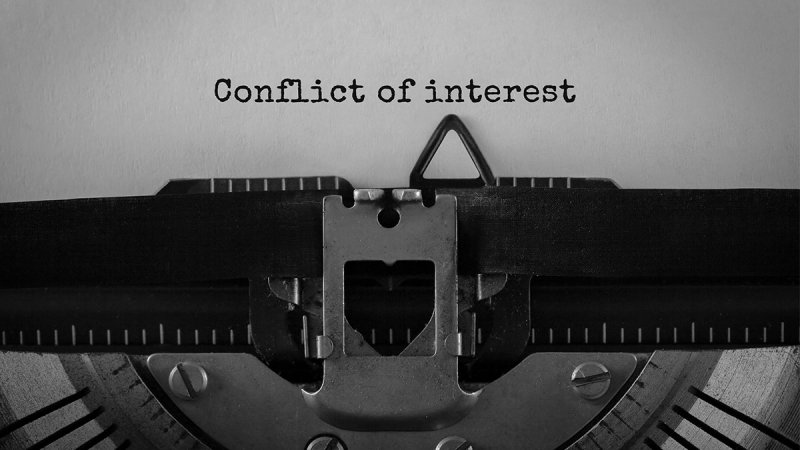Related Courses
A conflict of interest is when an individual has competing interests or loyalties. They could have two relationships that might compete with each other for that person’s loyalties – this could be a conflict between loyalty to an employer and loyalty to a family member.
As this falls under the topic of unethical activities, conflicts of interests can carry the risk of legal consequences. The circumstances can change when it comes to a conflict of interests, and that determines whether or not it is legal.
Legality
The key thing to consider with a conflict of interest is disclosure. If disclosed beforehand, and the person is given the approval to continue, then the conflict of interest is not a problem – and consequently legal. However, if the conflict of interest activity was disapproved and the individual continued despite this, or never it disclosed in the first place, it could be considered illegal.
The main thing that gets people in trouble is failing to disclose before engaging in the activity. Additionally, a lot of the time there is a failure to document the decision for record-keeping purposes.
Understanding a Conflict of Interest
A conflict of interest can exist in many different situations. The easiest way to explain the concept of conflict of interest is by using some examples:
- A public official whose personal interests conflict with his/her professional position
- A person who has a position of authority in one organisation that conflicts with his/her interests in another organisation
- A person who has conflicting responsibilities
There are different activities that can create a possible conflict of interest:
- Nepotism is the process of favouring relatives or close friends, usually by hiring them. This classes as a conflict of interest because the relative may not be the best person for the job, yet because of the personal link, you are prioritising them.
- Self-dealing is when someone high up in a company acts off their own interests rather than the interests of the company. This often occurs in a situation where someone abuses their position of trust. An example of this could be an estate agent benefiting from the sale of a property.
- Organisations tend to have policies and procedures in place to avoid conflict of interests occurring in the first place. For example, many businesses are against hiring relatives because of the potential problems it can cause.
- Members of the board of directors have to sign a conflict of interest policy statements, and if a conflict surfaces, they could be kicked off the board, and possibly even sued – it is something to be taken seriously.
One common conflict for board members is insider trading. This is when they could hear of a potential deal that might affect the selling prices of company stock – their influential position means that they can exploit that confidential information for their own personal gain.

Appearance of a Conflict
The appearance of a conflict of interest is when something looks like it could potentially become a conflict of interest. For examples, if a business executive hires her daughter, it looks like it could be a conflict of interest already. However, it isn’t a conflict of interest unless the daughter is given preferential treatment (such as having a higher salary than her equals). If the executive isn’t in the position to give favours, then there’s no problem – but it’s always a tricky situation because of how it looks from the outside.
To avoid a conflict of interest occurring, it is easiest to avoid the appearance of a conflict in the first place. Sometimes just appearing to have a conflict is enough to have negative consequences. You should set up strong policies and procedures for all types of conflicts, and then enforce these structures from the top to the bottom of the company.
Examples
Here are some workplace situations in which conflicts of interest in the workplace occur:
1. An employee may work for one company but he or she may have a side business that competes with the employer. In this case, the employee would likely be asked to resign or be fired.
2. A common workplace conflict of interest involves a manager and his/her employee in a relationship, whether they are married or just dating. This is a conflict because the manager has the power to show favouritism through promotion or a pay rise. Moreover, discussions about the company between the two people may also breach confidentiality restrictions.
3. An employee who has a friendship with a supplier and allows that supplier to go around the bidding process or gives the supplier the bid is a conflict because, again, the employee is showing favouritism.
4. A former employee may take his former company’s customer list and directly compete. Non-disclosure agreements are often required of executives and business owners for this reason.
5. In the public sector, a public servant may have a conflict of interest based on their knowledge of an event or their link to the situation. For example, if a judge has a link to one of the parties of the case, they must disclose the relationship and take themselves off the case straight away.

